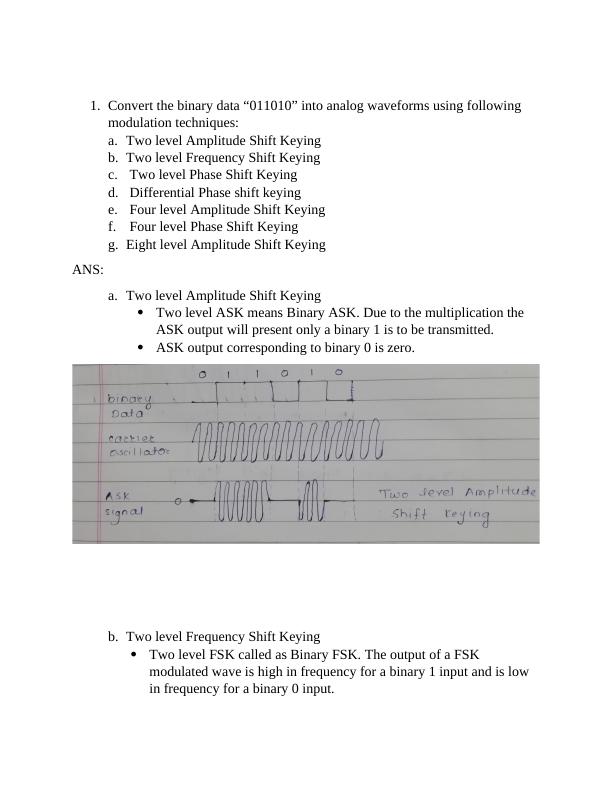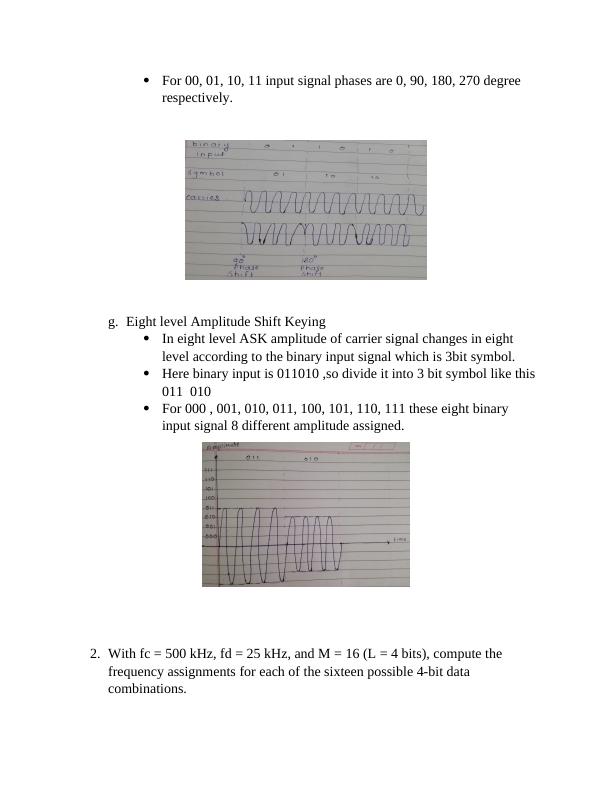Modulation Techniques for Binary Data
Convert binary data into analog waveforms using different modulation techniques, compute frequency assignments, draw waveforms and constellation diagrams, explain error detection process, compute frame check sequence, compute transmitted signal using Direct Sequence Spread Spectrum, compare Infrastructure and ad hoc modes in WLAN
Added on 2022-11-26
About This Document
Modulation Techniques for Binary Data
Convert binary data into analog waveforms using different modulation techniques, compute frequency assignments, draw waveforms and constellation diagrams, explain error detection process, compute frame check sequence, compute transmitted signal using Direct Sequence Spread Spectrum, compare Infrastructure and ad hoc modes in WLAN
Added on 2022-11-26
End of preview
Want to access all the pages? Upload your documents or become a member.




